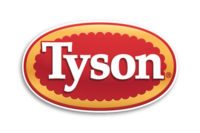Many innovations in packaging stemmed from European Union (EU) environmental regulations re-shaping the industry there. Tenneco's Kobusch Folien division introduced its shaped pouches, which can be modified into any individual shape related to the product it contains. Italy's Goglio Group displayed stand-up pouches to package everything from pasta, sugar, rice, sausages and potatoes, to block-bottom coffee packs with degassing valves.
On the equipment side, French company Thimonnier presented its M 5200 form/fill/seal machine for packing milk, water and juices into polyethylene pouches. The machine features enhanced sanitary capability for extended shelf life and can handle pouches from 100 to 2,000ml.
Dialogue continued regarding the suitability of PET (polyethylene terephthalate) containers for beer as exhibitors offered solutions to unresolved issues such as shelf life. The Sidel Group introduced a plasma coating ACTIS (Amorphous Carbon Treatment on Internal Surface) process for PET bottles. According to Sidel, treated bottles have 30 times increased oxygen barrier properties compared to traditional, single-layer PET bottles, while the carbon dioxide barrier is seven times stronger.
Sipa Plastic Packaging Systems developed a process to decrease the presence of oxygen in the walls of the PET container itself by focusing on the polymer rather than the finished preform.
The increasing snack market in Europe and the trend toward more single source packaging suppliers led Ishida Europe to unveil what it claims is the first integrated snack packaging line. The Ishida IPS-S incorporates a multihead weigher, bagmaker, metal detector, seal-tester and casepacker in one unit.

